Related products
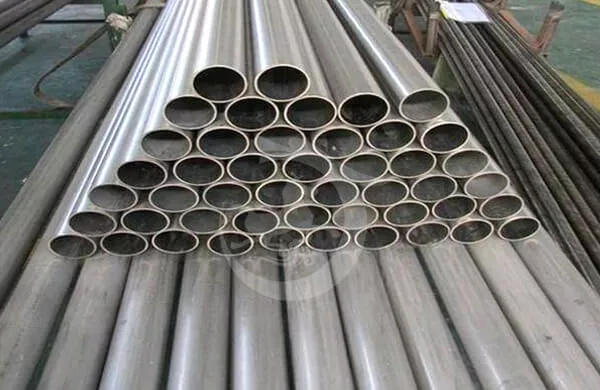
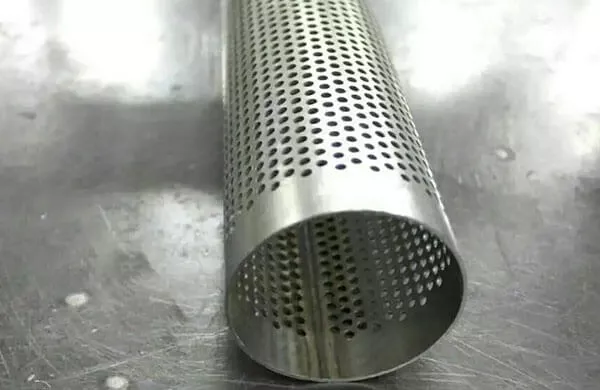
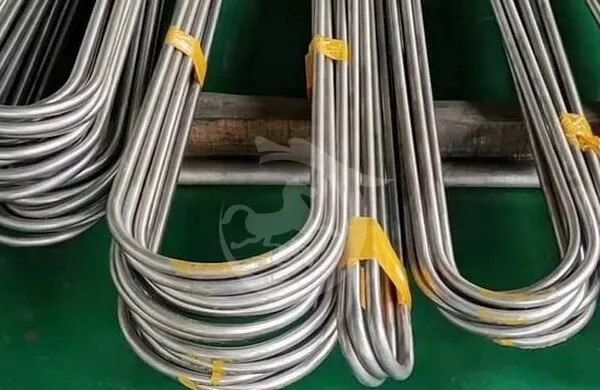



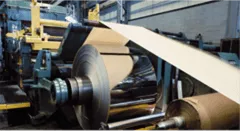

live a message
Titanium is an important structural metal developed in the 1950s. Titanium alloys are widely used in various fields because of their high specific strength, good corrosion resistance and high heat resistance. Many countries around the world have recognized the importance of titanium alloy materials and have successively researched and developed them for practical applications. Titanium is the ⅣB element in the periodic table, the appearance of steel, melting point of 1 672 ℃, is a refractory metal. Titanium is abundant in the earth's crust, much higher than Cu, Zn, Sn, Pb and other common metals. China's titanium resources are extremely rich, only in Sichuan Panzhihua area found in the very large vanadium and titanium magnetite, associated titanium metal reserves of about 420 million tons, close to the sum of foreign proven titanium reserves.
Great Heat Transfer PropertiesTitanium tubes have great heat transfer properties thanks to its thermal conductivity and resistance. The same can't be said for copper and carbon steel tubes. Their resistance to heat also allows them to work successfully at temperatures up to 600 degrees or higher.
1. Lower DensityThe density of titanium tubes is significantly lower than steel, copper, or nickel products. Despite their low density, they are very strong and rigid when compared to other alloy components.
2. Resistant to CorrosionAnother benefit of utilizing titanium tubing is that titanium alloys are resistant to corrosion. This makes these tubes an appealing option if you need a part to work efficiently in a highly corrosive environment.
3. Resistant to Chemicals Corrosion is not the only thing that titanium tubes are resistant to. They are also resistant to chemicals. These titanium parts can withstand different chemical compounds while still preforming effectively.
4. Great Heat Transfer PropertiesTitanium tubes have great heat transfer properties thanks to its thermal conductivity and resistance. The same can’t be said for copper and carbon steel tubes. Their resistance to heat also allows them to work successfully at temperatures up to 600 degrees or higher.These are just a few of the many benefits that come from utilizing titanium tubes.
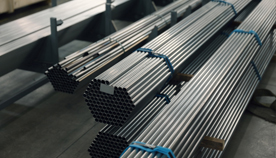
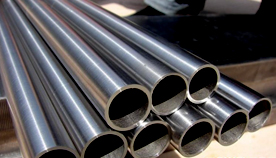
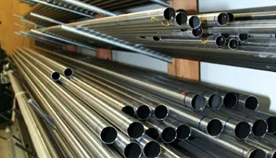
| KUAIMA | Typical corresponding standard | Chemical composition(wt%) | ||||||||
| N | C | H | Fe | O | Al | V | Ti | Other elements | ||
| DT1 | JIS Class 1 | ≦0.03 | ≦0.08 | ≦0.013 | ≦0.20 | ≦0.15 | - | - | Bal | |
| ASTM Grade 1 | ≦0.03 | ≦0.08 | ≦0.015 | ≦0.20 | ≦0.18 | - | - | Bal | ||
| DIN3.7025 | ≦0.05 | ≦0.06 | ≦0.013 | ≦0.15 | ≦0.12 | - | - | Bal | ||
| DT2 | JIS Class 2 | ≦0.03 | ≦0.08 | ≦0.013 | ≦0.25 | ≦0.20 | - | - | Bal | |
| ASTM Grade 2 | ≦0.03 | ≦0.08 | ≦0.015 | ≦0.30 | ≦0.25 | - | - | Bal | ||
| DIN3.7035 | ≦0.05 | ≦0.06 | ≦0.013 | ≦0.20 | ≦0.18 | - | - | Bal | ||
| DT3 | JIS Class 3 | ≦0.05 | ≦0.08 | ≦0.013 | ≦0.30 | ≦0.30 | - | - | Bal | |
| ASTM Grade 3 | ≦0.05 | ≦0.08 | ≦0.015 | ≦0.30 | ≦0.35 | - | - | Bal | ||
| DIN3.7055 | ≦0.05 | ≦0.06 | ≦0.013 | ≦0.25 | ≦0.25 | - | - | Bal | ||
| DT4 | JIS Class 4 | ≦0.05 | ≦0.08 | ≦0.013 | ≦0.50 | ≦0.40 | - | - | Bal | |
| ASTM Grade 4 | ≦0.05 | ≦0.08 | ≦0.015 | ≦0.50 | ≦0.40 | - | - | Bal | ||
| DIN3.7065 | ≦0.05 | ≦0.06 | ≦0.013 | ≦0.30 | ≦0.35 | - | - | Bal | ||
| KUAIMA | Typical corresponding standard | Chemical composition(wt%) | ||||||||
| N | C | H | Fe | O | Al | V | Ti | Other elements | ||
| DAT5 | JIS Class 60 | ≦0.05 | ≦0.08 | ≦0.015 | ≦0.40 | ≦0.20 | 5.50~ 6.75 | 3.50~ 4.50 | Bal | |
| ASTM Grade 5 | ≦0.05 | ≦0.08 | ≦0.015 | ≦0.40 | ≦0.20 | 5.5~ 6.75 | 3.5~ 4.5 | Bal | ||
| DIN3.7164 | ≦0.05 | ≦0.08 | ≦0.0125 | ≦0.30 | ≦0.20 | 5.5~ 6.75 | 3.5~ 4.5 | Bal | ||
| AMS 4928 | ≦0.05 | ≦0.08 | ≦0.0125 | ≦0.30 | ≦0.20 | 5.50~ 6.75 | 3.50~ 4.50 | Bal | Y≦0.005 | |
| DAT5E | JIS Class 60E | ≦0.03 | ≦0.08 | ≦0.0125 | ≦0.25 | ≦0.13 | 5.50~ 6.50 | 3.50~ 4.50 | Bal | |
| ASTM F136 | ≦0.05 | ≦0.08 | ≦0.012 | ≦0.25 | ≦0.13 | 5.5~ 6.50 | 3.5~ 4.5 | Bal | ||
| AMS 4930 | ≦0.05 | ≦0.08 | ≦0.0125 | ≦0.25 | ≦0.13 | 5.50~ 6.50 | 3.50~ 4.50 | Bal | Y≦0.005 | |
| DAT67 | ASTM F1295 | ≦0.05 | ≦0.08 | ≦0.009 | ≦0.25 | ≦0.20 | 5.50~ 6.50 | - | Bal | Nb 6.50~7.50 |
| Ta≦0.50 | ||||||||||
| DAT52 | JIS Class 61 | ≦0.03 | ≦0.08 | ≦0.015 | ≦0.25 | ≦0.15 | 2.50~ 3.50 | 2.00~ 3.00 | Bal | |
| ASTM Grade 9 | ≦0.03 | ≦0.08 | ≦0.015 | ≦0.25 | ≦0.12 | 2.5~ 3.5 | 2.0~ 3.0 | Bal | ||
| DAT52F | JIS Class 61F | ≦0.05 | ≦0.10 | ≦0.015 | ≦0.30 | ≦0.25 | 2.70~ 3.50 | 1.60~ 3.40 | Bal | S 0.05~0.20 |
| (Material for free cutting) | REM 0.05~0.70 | |||||||||
| DAT51 | JIS Class 80 | ≦0.05 | ≦0.10 | ≦0.015 | ≦1.00 | ≦0.25 | 3.50~ 4.50 | 20.0~ 23.0 | Bal | |
| (Material for cold working) | ||||||||||
| DAT54 | Daido original standard | ≦0.05 | ≦0.20 | ≦0.015 | ≦1.00 | ≦0.25 | 5.5~ 6.5 | - | Bal | Si 0.2~0.7 |
| Mo 2.5~3.5 | ||||||||||
| Sn 3.0~4.5 | ||||||||||
| Zr 3.0~4.0 | ||||||||||
| Nb 0.4~1.0 | ||||||||||
| DAT55G | Daido original standard | ≦0.05 | ≦0.10 | ≦0.015 | ≦1.00 | ≦0.25 | 3.5~ 4.5 | 15.0~ 17.0 | Bal | Cr 5.0~7.0 |
| DAT56M | Daido original (CATi) | ≦0.05 | ≦0.10 | ≦0.015 | 0.4~1.5 | ≦0.30 | 2.5~ 3.5 | - | Bal | Cr 12.5~14.5 |
| DAT57M | Daido original (VLTi) | ≦0.05 | ≦0.10 | ≦0.015 | 0.4~1.5 | ≦0.30 | 5.5~ 6.5 | - | Bal | |
| ASTM Grade41 | ||||||||||
| DAT15G | AMS4914 | ≦0.05 | ≦0.05 | ≦0.015 | ≦0.25 | ≦0.13 | 2.5~ 3.5 | 14.0〜 16.0 | Bal | Cr 2.5〜3.5 |
| Sn 2.5〜3.5 | ||||||||||
| KUAIMA | Typical corresponding standard | Tensile strength | 0.2% Yield strength | Elongation | Reduction of area | 180° bending | Hardness | Heat treatment condition |
| BRAND | (N/mm2) | (N/mm2) | (%) | (%) | (inner radius) | (HB) | ||
| DT1 | JIS Class 1 | 270~410 | ≧165 | ≧27 | - | 2T | ≧100 | Annealing |
| ASTM Grade 1 | ≧240 | ≧138 | ≧24 | ≧30 | - | - | Annealing | |
| DIN3.7025 | 290~410 | ≧180 | ≧30 | - | - | - | Annealing | |
| DT2 | JIS Class 2 | 340~510 | ≧215 | ≧23 | - | 2T | ≧110 | Annealing |
| ASTM Grade 2 | ≧345 | ≧275 | ≧20 | ≧30 | - | - | Annealing | |
| DIN3.7035 | 390~540 | ≧250 | ≧22 | - | - | - | Annealing | |
| DT3 | JIS Class 3 | 480~620 | ≧345 | ≧18 | - | 3T | ≧150 | Annealing |
| ASTM Grade 3 | ≧450 | ≧380 | ≧18 | ≧30 | - | - | Annealing | |
| DIN3.7055 | 460~590 | ≧320 | ≧18 | - | - | - | Annealing | |
| DT4 | JIS Class 4 | 550~750 | ≧485 | ≧15 | - | 3T | ≧180 | Annealing |
| ASTM Grade 4 | ≧550 | ≧483 | ≧15 | ≧25 | - | - | Annealing | |
| DIN3.7065 | 540~740 | ≧390 | ≧16 | - | - | - | Annealing | |
| KUAIMA | Typical corresponding standard | Tensile strength | 0.2% Yield strength | Elongation | Reduction of area | 180° bending | Hardness | Heat treatment condition |
| BRAND | (N/mm2) | (N/mm2) | (%) | (%) | (inner radius) | (HB) | ||
| DAT5 | JIS Class 60 | ≧895 | ≧825 | ≧10 | ≧25 | - | - | Annealing |
| ASTM Grade 5 | ≧895 | ≧828 | ≧10 | ≧25 | - | - | Annealing | |
| DIN3.7164 | ≧900 | ≧830 | ≧10 | ≧25 | - | - | Annealing | |
| AMS 4928 | ≧896 | ≧827 | ≧10 | ≧25 | - | - | Annealing | |
| DAT5E | JIS Class 60E | ≧825 | ≧755 | ≧10 | ≧25 | - | - | Annealing |
| ASTM F136 | ≧860 | ≧795 | ≧10 | ≧25 | - | - | Annealing | |
| AMS 4930 | ≧827 | ≧758 | ≧8 | ≧15 | - | - | Annealing | |
| DAT67 | ASTM F1295 | ≧900 | ≧800 | ≧10 | ≧15 | - | - | Annealing |
| DAT52 | JIS Class 61 | ≧620 | ≧485 | ≧15 | ≧30 | - | - | Annealing |
| ASTM Grade 9 | ≧620 | ≧483 | ≧15 | ≧25 | - | - | Annealing | |
| DAT52F | JIS Class 61 | ≧650 | ≧600 | ≧10 | ≧25 | - | - | Annealing |
| (Material for free cutting) | ||||||||
| DAT51 | JIS Class 80 | 640~900 | ≦850 | ≧10 | ≧55 | - | - | Solution |
| (Material for cold working) | ||||||||
| DAT54 | Daido original standard | ≧895 | ≧825 | ≧5 | ≧10 | - | - | Annealing |
| DAT55G | Daido original standard | 770~1050 | ≦1000 | ≧10 | ≧25 | - | - | Solution |
| DAT56M | Daido original (CATi) | 850~1100 | ≦1050 | ≧10 | ≧25 | - | - | Solution |
| DAT57M | Daido original (VLTi) | ≧895 | ≧825 | ≧10 | ≧25 | - | - | Annealing |
| ASTM Grade41 | ||||||||
| DAT15G | AMS 4914 | 703〜 745 | 689〜 869 | ≧12 | - | - | - | Solution |
Grade | Supply Status | Manufacturing method | outer diameter(mm) | wall thickness(mm) | |||||||||||
0.5 | 0.6 | 0.8 | 1.0 | 1.25 | 1.5 | 2.0 | 2.5 | 3.0 | 3.5 | 4.0 | 4.5 | ||||
TA1TA2TA9TA10 | Annealed state(M) | Cold rolled (cold drawn) | 10-15 | ○ | ○ | ○ | ○ | ○ | ○ | ○ | — | — | — | — | — |
﹥15-20 | — | ○ | ○ | ○ | ○ | ○ | ○ | ○ | — | — | — | — | |||
﹥20-30 | — | ○ | ○ | ○ | ○ | ○ | ○ | ○ | — | — | — | — | |||
﹥30-40 | — | — | — | — | ○ | ○ | ○ | ○ | — | — | — | — | |||
﹥40-50 | — | — | — | — | ○ | ○ | ○ | ○ | — | — | — | ||||
﹥50-60 | — | — | — | — | — | ○ | ○ | ○ | ○ | ○ | — | — | |||
﹥60-80 | — | — | — | — | — | — | ○ | ○ | ○ | ○ | ○ | ○ | |||
welding | 16 | ○ | ○ | ○ | ○ | — | — | — | — | — | — | — | — | ||
19 | ○ | ○ | ○ | ○ | ○ | — | — | — | — | — | — | — | |||
25、27 | ○ | ○ | ○ | ○ | ○ | ○ | — | — | — | — | — | — | |||
31、32、33 | — | — | ○ | ○ | ○ | ○ | ○ | — | — | — | — | — | |||
38 | — | — | — | — | — | ○ | ○ | ○ | — | — | — | — | |||
50 | — | — | — | — | — | — | ○ | ○ | — | — | — | — | |||
63 | — | — | — | — | — | — | ○ | ○ | — | — | — | — | |||
welding - rolling | 6-10 | ○ | ○ | ○ | ○ | ○ | — | — | — | — | — | — | — | ||
﹥10-15 | ○ | ○ | ○ | ○ | ○ | ○ | — | — | — | — | — | — | |||
﹥15-20 | ○ | ○ | ○ | ○ | ○ | ○ | ○ | — | — | — | — | — | |||
﹥20-25 | ○ | ○ | ○ | ○ | ○ | ○ | ○ | — | — | — | — | — | |||
﹥25-30 | ○ | ○ | ○ | ○ | ○ | ○ | ○ | — | — | — | — | — | |||
Note: "○" indicates the specifications that can be produced | |||||||||||||||
| titanium tube sales | titanium tube price list |
| titanium tube shaping bike frame | titanium tube price per kg |
| titanium tube sheet price | titanium tube price per pound |
| titanium tube smoker 18 | titanium tube price trend |
| titanium tube south | titanium tube price uk |
| titanium tube specs | titanium tube products |
We are a well known worldwide exporter of Titanium tube Qatar, Ireland, Portugal, Gambia, Thailand, Ukraine, United Kingdom, Netherlands, South Africa, Spain, Turkey, Italy, Libya, Romania, Puerto Rico, Azerbaijan, United Arab Emirates, Pakistan, Philippines, Ghana, Slovakia, Germany, Saudi Arabia, Afghanistan, China, Bolivia, Switzerland, Bangladesh, Taiwan, Oman, Egypt, Greece, Norway, Singapore, Bulgaria, Estonia, Belgium, Yemen, Hong Kong, Ecuador, Sri Lanka, Nepal, Belarus, Finland, Gabon, Iran, Canada, Argentina, Lebanon.


 WeChat
WeChat